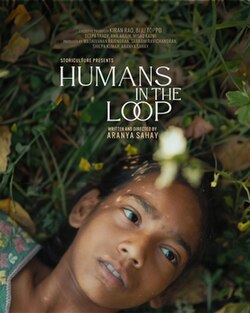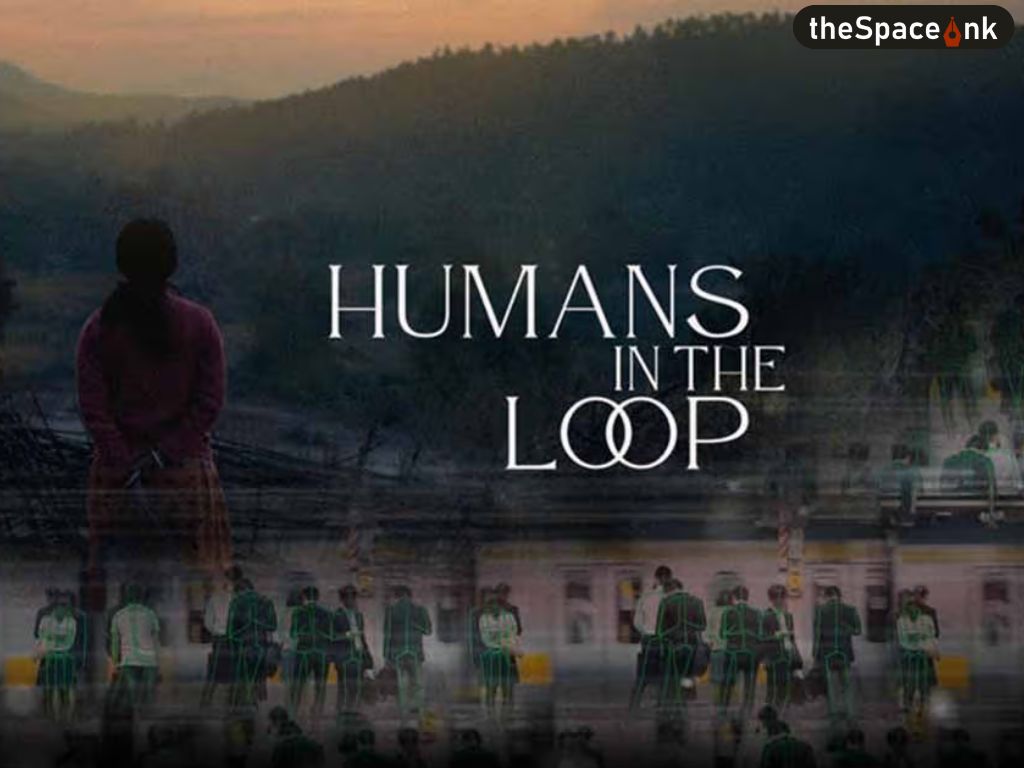(Humans in the Loop)
Film: Humans in the Loop
Cast: Sonal Madhushankar
Director: Aranya Sahay
Producers: Mathivanan Rajendran, Shilpa Kumar, Sarabhi Ravichandran
Cinematography: Harshit Saini, Monica Tiwari
Editor: Swarup Raghu, Aranya Sahay
In a small village in Jharkhand, a tribal woman sits cross-legged on the floor, her smartphone balanced on her lap. As the rest of her family prepares for the day, she logs onto a global data annotation platform. Her task: to draw digital boxes around objects in photos—traffic lights, bicycles, unfamiliar city streets. She has never seen a Tesla or a Manhattan avenue in real life, but her careful clicks will teach an algorithm to recognise them. This tribal’s world is far from the glass towers of Silicon Valley, yet her invisible labour is a crucial building block of the global AI supply chain.
Nehma (Sonal Madhushankar) is one such Oraon (a tribal community) woman from Jharkhand who finds herself in a similar situation in Aranya Sahay’s ‘Humans in the Loop’, which is garnering wide attention and acclaim for all the right reasons and for the sensitive handling of the subject. The 72-minute film released in theatres recently and is currently running on Netflix.
With minimal education, Nehma is one of the innumerable faceless bolts in the humongous AI machine worldwide. Even as her personal life is on the verge of tearing apart — she being a tribal, is almost ostracised in the village she lives in and her live-in partner (in her dhuku ‘marriage’) has dumped her and is set to remarry.
Amidst such a situation, Nehma leaves Ranchi and returns to her native village in Jharkhand with her daughter Dhanu and infant son Guntu. Inspite of failing the test, she lands a job of a data worker on the pursuance of a fellow woman.

The film throws light on the changed rural landscape of suburban India, where the nature of extraction has shifted from the physical to the digital. Instead of tea leaves or iron ore, the resource is data—images, texts, and sounds that human hands must painstakingly label before machines can learn from them. It shows a life where tribal and Dalit women are increasingly joining AI’s supply chain as “human-in-the-loop” workers. The labels these women produce train AI models (for tasks from object recognition to medical diagnostics).
Apart from visually opening up this striking world to us, the film also deals with the clash between nature and man and their intimate and inevitable bond in the process.
“The film also unravels the hidden biases and ethical dilemmas of western AI versus its Indian tribal creators.”
Nehma repeatedly sees a particular porcupine in her dreams — an animal which is too shy to show up in general, but with whom Nehma shared an inexplicable bond during her childhood. So much so, that their ‘friendship’ was the talk of the village then.
Connecting the dots, we see a porcupine leading Nehma’s rebellious daughter to the right way as she loses her way in the jungle.

It’s a beautiful allegory that no matter how much the human race beats the drums of progress, the symbiotic bond between nature and man still lurks beneath the veneer of so-called progress and ought to remain so.
A particular scene in the film stands out for its brilliancy. As Nehma’s supervisor types ‘tribal Indian woman’ on the computer screen, the feed shows up tribal native Americans, or worse, white women with weird make-up. The irony strikes hard. Nehma is heartbroken, so are we. The nimble tribal fingers that are teaching the AI world to recognise objects, remain faceless as they have no place in the dominating white world that dictates rules.
“All we can say is a heartfelt ‘thank you’ to the director for giving a distinct face and voice to the countless faceless and voiceless marginalised women — ‘humans in the loop’ —- who are an integral part of the bottomless pit called the AI.”
The film also unravels the hidden biases and ethical dilemmas of western AI versus its Indian tribal creators. Nehma refuses to label a particular organism ‘pest’ (as categorised by the US) as she argues that the organism is not a pest in its truest term — that it’s not harmful to plants, as it doesn’t eat up healthy leaves, but only its rotten parts. Not surprisingly, she gets a mouthful from her supervisor.

The film is filled with silences that enhances the effect it leaves on the viewers. With almost non-existent music, the slow-paced cinematography captures the forest with its numerous inhabitants, the stretch of the open sky, Nehma lying on the green grass, the flight of birds in the sky beautifully. The film deftly contrasts primitive and ethereal nature against a world dominated by machines.
Also Read: Adolescence: The Anatomy of a Teenage Tragedy
All we can say is a heartfelt ‘thank you’ to the director for giving a distinct face and voice to the countless faceless and voiceless marginalised women — ‘humans in the loop’ —- who are an integral part of the bottomless pit called the AI. The title of the film is deliciously ironic.
The best part of the film is Nehma attributing authenticity to ‘tribal Indian woman’. How? For that, you have to watch ‘Humans in the Loop’. Do give it a try. You won’t be disappointed. (Humans in the Loop)
AI information: Centre for development policy and practice.
Photo Courtesy: Wikipedia.Org, Youtube, BookMyShow









One Response
A pensive in depth review to bring out the message of the film.